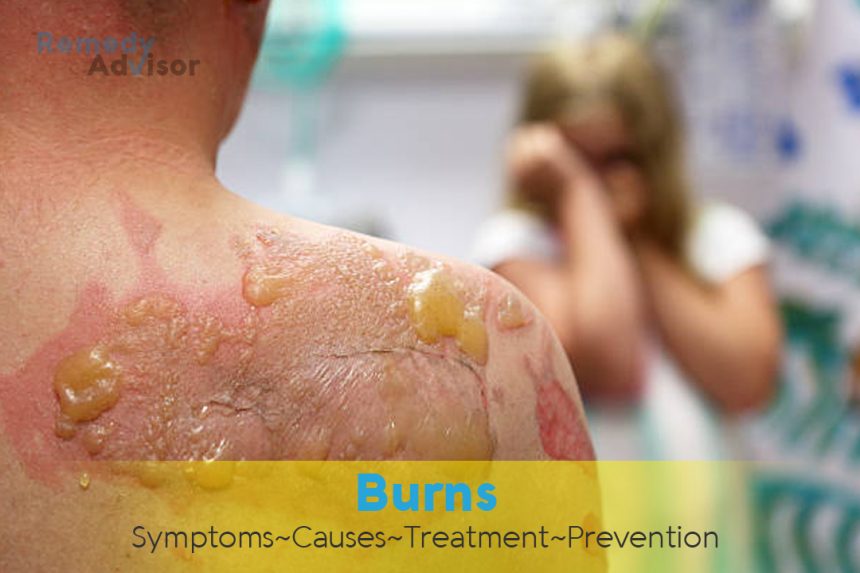What is it
A burn is damage to the skin from a heat source, a corrosive chemical, or electricity. The damage can range from mild to potentially fatal, depending upon the temperature or intensity of the burn source and the length of exposure to it. Burns are classified according to their degree of severity and the amount of skin involved:
First-degree burns damage only the epidermis (the outer skin layer). They are not dangerous but can be extremely painful.
Second-degree burns damage the epidermis and part of the dermis (the underlying skin layer). Because of fluid leaking from damaged blood vessels, the layers separate from one another, which causes blisters to form. Although very painful, second-degree bums are generally not critical unless they are quite large or become infected.
Third-degree burns destroy all skin layers and cause damage to muscle, bone, blood vessels, and nerves beneath the skin. They often leave scars when they heal. Third-degree burns are serious; they can be fatal (because the skin can no longer insulate the body from microorganisms that cause disease), and they should always be treated as a medical emergency.
Symptoms
First-degree burns
- Reddening of the skin, tenderness, possibly some swelling.
Second-degree burns
- Pain, blistering, redness, mild to moderate swelling.
Third-degree burns
- Skin that is white, red, brown, ton, or black (charred) in color. No blistering, but extensive swelling. Because of nerve damage, there is often little or no immediate pain and generally no bleeding.
What causes it
First-degree burns are usually the result of some minor household accident, such as grabbing the handle of a pan that’s too hot, touching a hot iron, or scalding yourself with hot water or steam.
Sunburns can be first- or second-degree bums, depending upon their severity.
Chemical bums, which can range from mild to severe, result from contact with acids or alkalis (such as lye). Electrical burns occur when someone touches faulty or un-insulated wiring (or when a child chews through the wiring).
What if you do nothing
Most minor bums will usually heal without treatment. However, applying cold water right away to a burn will help minimize damage, speed healing, and reduce the chance of potential. Moderate or severe bums require medical attention.
Home remedies
The best way to treat a first-degree burn is not, as many people believe, with butter; butter won’t relieve pain and may cause infection if blisters form and then break. The following measures provide relief and speed healing.
Rinse in cold water
Cold water is by far the most effective first-aid treatment; it eases the pain as it cleanses. If you burn yourself, immerse the burn in cold water (or ice water), or hold it under cold running water for 15 minutes. Continually applying fresh cold-water compresses will help if it’s not practical to immerse the burned area, or use ice wrapped in a towel. For chemical bums, immediately rinse the skin with a steady flow of water from a spigot, shower, or hose for 10 to 15 minutes.
Bandage the burn
After applying cold water or compresses to a burn, you can bandage it with sterile gauze pads held on by tape if you wash. However, if blisters appear, try not to burst them. Dry the burn carefully before bandaging. You can apply a light dressing of an over-the-counter antibiotic cream (like Neosporin or Polysporin), that will calm the area, keep the skin damp, and safeguard it from infection.
Don’t apply burn ointments
Like butter (or mayonnaise), these ointments, usually oil-based, won’t relieve pain but instead will trap heat, slow down healing, and increase the risk of infection.
Leave small blisters alone
Blisters smaller than a dime that appear soon after the bum will usually shrink within a day or two and be reabsorbed by the body.
Prevention
Burns are often caused by accidents that are preventable. In addition to commonsense care when cooking or ironing, be sure to secure any containers of corrosive chemicals, repair loose wiring, and if you have small children in your home place covers over any unused electrical outlets. Also be sure to have working smoke detectors on each floor of your home and a fire extinguisher in the kitchen.







